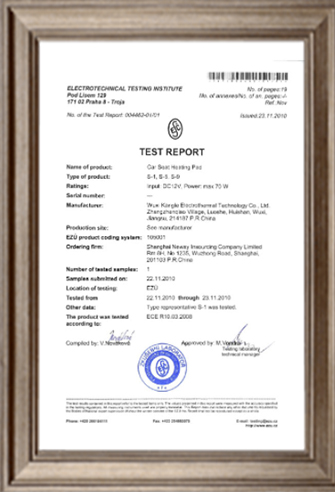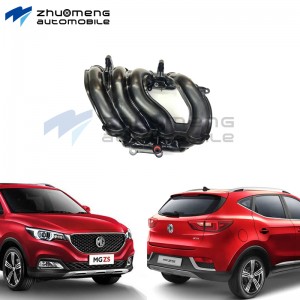Intake manifold.
For carburetor or throttle body gasoline injection engines, the intake manifold refers to the intake pipe from behind the carburetor or throttle body to before the cylinder head intake port. Its function is to distribute air and fuel mixture to each cylinder intake port by carburetor or throttle body.
For a port fuel injection engine or diesel engine, the intake manifold simply distributes clean air to the cylinder intakes. The intake manifold must distribute air, fuel mixture or clean air as evenly as possible to each cylinder, so that the length of the gas channel in the intake manifold should be as equal as possible. In order to reduce the gas flow resistance and improve the intake capacity, the inner wall of the intake manifold should be smooth.
Before we talk about the intake manifold, let's think about how the air gets into the engine. In the engine introduction, we have mentioned the operation of the piston in the cylinder, when the engine is in the intake stroke, the piston moves down to produce a vacuum in the cylinder (that is, the pressure becomes smaller), so that the pressure difference with the outside air can be generated, so that the air can enter the cylinder. For example, everyone should have been injected and seen how the nurse sucked the medicine into the needle bucket! If the needle bucket is the engine, then when the piston in the needle bucket is drawn out, the liquid will be sucked into the needle bucket, and this is how the engine draws air into the cylinder.
Due to the low temperature of the intake end, composite materials have become a popular intake manifold material, which is light and smooth inside, can effectively reduce resistance and increase the efficiency of the intake.
Reason for the name
The intake manifold is located between the throttle valve and the engine intake valve, the reason why it is called "manifold" is that after the air enters the throttle valve, after the manifold buffer system, the air flow channel is "divided" here, corresponding to the number of engine cylinders, such as the four-cylinder engine has four channels, and the five-cylinder engine has five channels, and the air is respectively introduced into the cylinders. For the natural intake engine, because the intake manifold is located after the throttle valve, when the engine throttle is open, the cylinder cannot absorb enough air, which will result in a high manifold vacuum; When the engine throttle is open, the vacuum in the intake manifold will become smaller. Therefore, the injection fuel supply engine will install a pressure gauge on the intake manifold to provide the ECU to determine the engine load and give the right amount of fuel injection.
Different uses
Manifold vacuum is not only used to provide pressure signals to determine engine load, there are many uses! If the brake also needs to use the vacuum of the engine to assist, so when the engine starts, the brake pedal will be much lighter, because of the vacuum assistance. There are also some forms of constant speed control mechanisms that make use of manifold vacuum. Once these vacuum tubes are leaked or improperly modified, it will cause engine control disorders and affect the brake operation, so readers are advised not to make improper modifications on the vacuum tubes to maintain driving safety.
Clever design
Intake manifold design is also a great deal of knowledge, in order to engine each cylinder combustion condition is the same, each cylinder manifold length and bend should be the same as possible. Since the engine is operated by four strokes, each cylinder of the engine will be pumped in a pulse mode, and as a rule of thumb, the longer manifold is suitable for low RPM operation, while the shorter manifold is suitable for high RPM operation. Therefore, some models will use variable length intake manifples, or continuous variable length intake manifples, so that the engine can play a better performance in all speed domains.
superiority
The main advantage of a plastic intake manifold is its lower cost and lighter weight. In addition, since the thermal conductivity of PA is lower than that of aluminum, the fuel nozzle and the incoming air temperature are lower. It can not only improve the hot start performance, improve the power and torque of the engine, but also avoid the heat loss in the tube to a certain extent when cold start, accelerate the increase of gas temperature, and the plastic intake manifold wall is smooth, which can reduce the air flow resistance, thus improving the performance of the engine.
In terms of cost, the material cost of the plastic intake manifold is basically the same as that of the aluminum intake manifold, and the plastic intake manifold is formed once, with a high pass rate; The aluminum intake manifold blank casting yield is low, the machining cost is relatively high, so the production cost of plastic intake manifold is 20%-35% lower than that of aluminum intake manifold.
Material requirement
1) High temperature resistance: the plastic intake manifold is directly connected to the engine cylinder head, and the engine cylinder head temperature can reach 130 ~150℃. Therefore, the plastic intake manifold material is required to withstand a high temperature of 180 ° C.
2) High strength: the plastic manifold is installed on the engine, to withstand the automotive engine vibration load, throttle and sensor inertial force load, intake pressure pulsation load, etc., but also to ensure that the engine is not exploded by high pressure pulsation pressure when abnormal tempering occurs.
3) Dimensional stability: The dimensional tolerance requirements of the connection between the intake manifold and the engine are very strict, and the installation of the sensors and actuators on the manifold should also be very accurate.
4) Chemical stability: the plastic intake manifold is in direct contact with gasoline and antifreeze coolant when working, gasoline is a strong solvent, and the glycol in the coolant will also affect the performance of the plastic, therefore, the chemical stability of the plastic intake manifold material is very high and needs to be strictly tested.
5) Thermal aging stability; The car engine is working under a very harsh ambient temperature, the working temperature changes in 30~ 130 ° C, and the plastic material must be able to ensure the long-term reliability of the manifold.
Please call us if you need such products.
Zhuo Meng Shanghai Auto Co., Ltd. is committed to selling MG&MAUXS auto parts welcome to buy.















